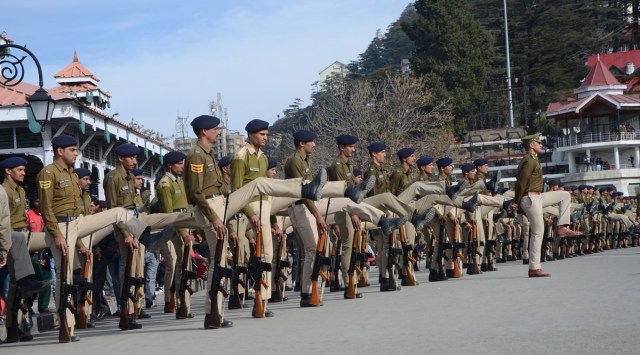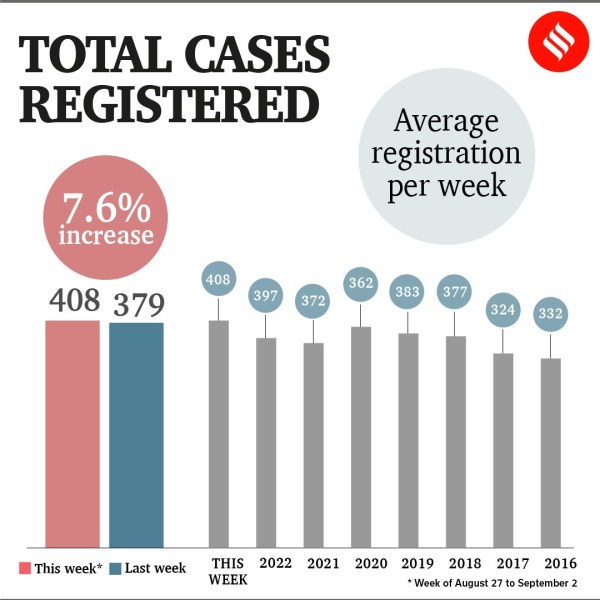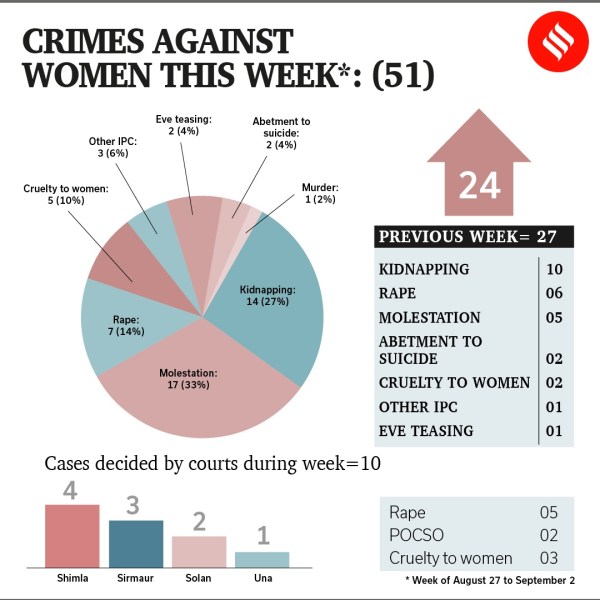- India
- International
Eye on the graph, how Himachal Police is working to check crime, NYPD style
At the weekly meeting chaired by the DGP, police pore through crime data of the week gone by to identify trends and tipping points
 For close to two years now, the Himachal Police have been working with a new model of 'predictive policing', using a data-intensive approach to steer the state towards reduced crime and accident rates. (Express Photo by Pradeep Kumar/File)
For close to two years now, the Himachal Police have been working with a new model of 'predictive policing', using a data-intensive approach to steer the state towards reduced crime and accident rates. (Express Photo by Pradeep Kumar/File)The data on the dashboard was stark and called for immediate action: week after week, over 25 per cent accidents across the state, including in districts such as Shimla, Kullu and Mandi, happened between 6 pm and 9 pm. At the weekly meeting chaired by the DGP of the Himachal Police, it was decided that more traffic personnel would be deployed during these hours, instead of during the afternoon hours, when traffic was lean.
The results followed: In 2021 there were 1.73 lakh traffic accidents, down from 1.81 lakh accidents in the pre-pandemic year of 2019.

Police have also written to the Public Works Department (PWD) to install crash barriers at 500 accident spots. This, after data showed that these hilly routes make for 70 per cent of mishap-prone stretches and that more than 3,020 “roll down” accidents have taken place in the last five years.
For close to two years now, the Himachal Police have been working with a new model of ‘predictive policing’, using a data-intensive approach to steer the state towards reduced crime and accident rates.
Every week, DGP Sanjay Kundu and his team pore through data from the week gone by – graphs of crimes under different heads, along with the weekly average over the last five years. An uptick in crime is marked with a red line and a drop is depicted in green.

According to the latest NCRB data for Himachal Pradesh, the total number of cases, including under IPC sections and special and local laws (SLL), stood at 18,833 in 2021, a fall of 2,000 cases from the previous year. The total number of violent crimes, including murder, dipped to 1,762 in 2021 from 1,817 in 2020. The number of environmental offences also dipped from 198 in 2020 to 163 in 2021.

“The news that mostly came out of Himachal was about landslides, drugs and crime against tourists. The idea was to identify hotspots, patterns and bring policing into focus. It was two years ago that we began analysing data on a weekly basis and it took us several months for the process to be streamlined. These statistics help us monitor a large number of cases in a cohesive manner. So now, if we know that some cases are stuck, we can issue specific directions,” said Kundu.
“Due to this exhaustive process, we have been able to identify trends, cancel bail of repeat offenders and deploy police in a timely manner. In short, we are able to get ahead of the crime curve. I am confident that crime rates are going to decline further,” he added.
One of the key focus areas of the police’s weekly data analysis is ‘crimes against women’. A chart listing the number of kidnappings, rape, molestation and other crimes is compared to corresponding figures from the previous week. Between August 27 and September 2, for instance, there were 51 cases of ‘crime against women’, 27 more than the previous week.
In cases of rape, the age of the victim, details of the accused, and the jurisdiction under which the crime happened, are tabulated separately. This helps police keep track of cases and spot trends if any, they said.
In POCSO cases, the status of each case in court is tracked, including whether statements have been taken or the trial has begun.
Another important data-set is the number of police officers who have deposed before the court in various cases, with a separate table for those who may have skipped the trial. The reasons for their absence is also attached in the weekly crime report.

“All this data helps us maintain transparency. We do not want to hide cases. We can do better policing only if we record crimes and work towards reducing them,” said Kundu.
The officer points to the case of Ajay Kumar, a resident of Dharamshala, who was found to be involved in 25 crimes against women. “This person would commit an offence, go to jail and come out on bail, but he completely escaped the radar due to lack of collated crime record.” Once Kumar was marked as a serial offender, police looked at their data to see where the prosecution was falling short – if police officers hadn’t turned up for evidence and if witnesses had deposed. “Through effective trial management, we moved applications for cancellation of his bail,” the DGP added. Police expect the serial offender to be back in jail soon.
The recent NCRB report said Himachal stood second in the country for ‘kidnapping recoveries’, with an average of 85.4% as against the national average of 50.8.
Kundu says that as they studied their weekly reports, it emerged that in several cases, the victims had fled their homes after arguments with parents and were recovered from bus stands and railway stations.
Kundu says his team’s predictive policing is inspired from an idea that the New York Police Department, headed by the legendary William Bratton, started in the 1990s. Called COMPSTAT, this involved studying data to narrow down on a pattern, and plug loopholes, if any. “They would then come up with what they called Charts of The Future, which was aimed at predicting crimes. The idea is to identify a tipping point, after which the crime declines,” says Kundu.
Apr 24: Latest News
- 01
- 02
- 03
- 04
- 05







































